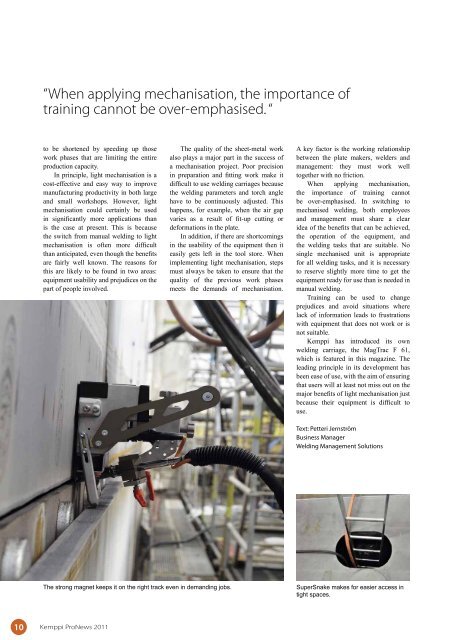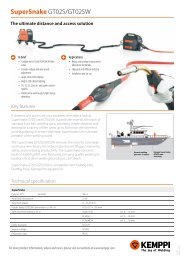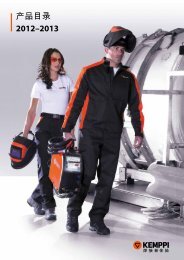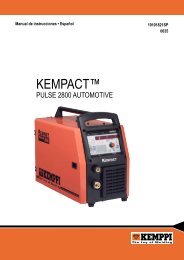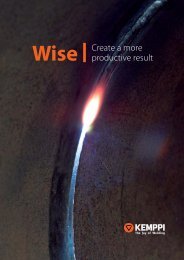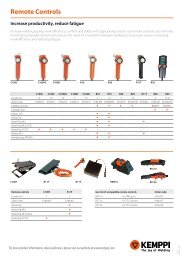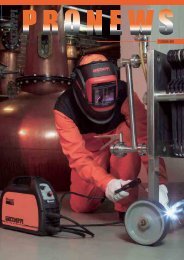Download - Kemppi Connections
Download - Kemppi Connections
Download - Kemppi Connections
Create successful ePaper yourself
Turn your PDF publications into a flip-book with our unique Google optimized e-Paper software.
“When applying mechanisation, the importance of<br />
training cannot be over-emphasised. “<br />
to be shortened by speeding up those<br />
work phases that are limiting the entire<br />
production capacity.<br />
In principle, light mechanisation is a<br />
cost-effective and easy way to improve<br />
manufacturing productivity in both large<br />
and small workshops. However, light<br />
mechanisation could certainly be used<br />
in significantly more applications than<br />
is the case at present. This is because<br />
the switch from manual welding to light<br />
mechanisation is often more difficult<br />
than anticipated, even though the benefits<br />
are fairly well known. The reasons for<br />
this are likely to be found in two areas:<br />
equipment usability and prejudices on the<br />
part of people involved.<br />
The quality of the sheet-metal work<br />
also plays a major part in the success of<br />
a mechanisation project. Poor precision<br />
in preparation and fitting work make it<br />
difficult to use welding carriages because<br />
the welding parameters and torch angle<br />
have to be continuously adjusted. This<br />
happens, for example, when the air gap<br />
varies as a result of fit-up cutting or<br />
deformations in the plate.<br />
In addition, if there are shortcomings<br />
in the usability of the equipment then it<br />
easily gets left in the tool store. When<br />
implementing light mechanisation, steps<br />
must always be taken to ensure that the<br />
quality of the previous work phases<br />
meets the demands of mechanisation.<br />
A key factor is the working relationship<br />
between the plate makers, welders and<br />
management: they must work well<br />
together with no friction.<br />
When applying mechanisation,<br />
the importance of training cannot<br />
be over-emphasised. In switching to<br />
mechanised welding, both employees<br />
and management must share a clear<br />
idea of the benefits that can be achieved,<br />
the operation of the equipment, and<br />
the welding tasks that are suitable. No<br />
single mechanised unit is appropriate<br />
for all welding tasks, and it is necessary<br />
to reserve slightly more time to get the<br />
equipment ready for use than is needed in<br />
manual welding.<br />
Training can be used to change<br />
prejudices and avoid situations where<br />
lack of information leads to frustrations<br />
with equipment that does not work or is<br />
not suitable.<br />
<strong>Kemppi</strong> has introduced its own<br />
welding carriage, the MagTrac F 61,<br />
which is featured in this magazine. The<br />
leading principle in its development has<br />
been ease of use, with the aim of ensuring<br />
that users will at least not miss out on the<br />
major benefits of light mechanisation just<br />
because their equipment is difficult to<br />
use.<br />
Text: Petteri Jernström<br />
Business Manager<br />
Welding Management Solutions<br />
The strong magnet keeps it on the right track even in demanding jobs.<br />
SuperSnake makes for easier access in<br />
tight spaces.<br />
10 <strong>Kemppi</strong> ProNews 2011


